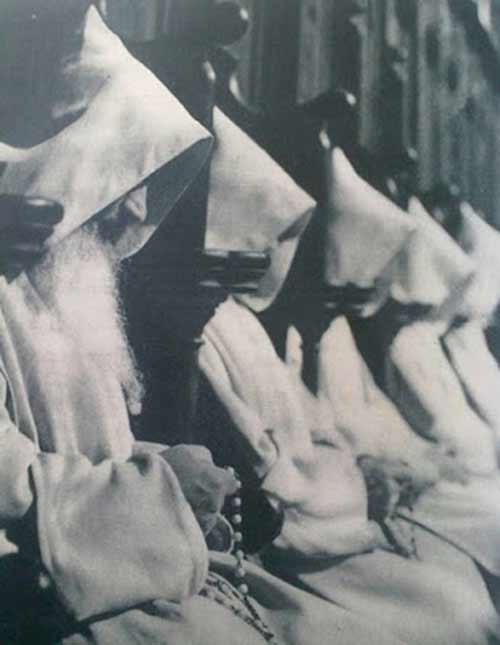
October 7 was the Feast of Our Lady of the Rosary, and October is, traditionally, the month of the Rosary.
The 150 recitations of the Hail Mary was, obviously, connected to the monastic praying of the 150 psalms (especially for those without books or who could not read). The recent addition of another 50 Hail Marys has obscured this connection to the Daily Office, the Prayer of the Church.
There is an old tradition, (presumably older than the division into 15 ‘decades’ – with each ‘decade’ having a ‘mystery’ to reflect on) which simply used the Biblical verses (of the first half of the Hail Mary) concluded with a thought about Jesus:
Hail Mary full of Grace, the Lord is with you. Blessed are you among women and blessed is the fruit of your womb Jesus, conceived of the Holy Spirit during the Annunciation of the Angel.
Hail Mary full of Grace, the Lord is with you. Blessed are you among women and blessed is the fruit of your womb Jesus, who together with you who has conceived him, visits Saint Elizabeth.
…
This approach has been termed The Carthusian Rosary. I am reliant on others for its history and its connection to the Carthusians.
There is a full list of 50 endings and more reflections here.
There are ways we might use this approach as an entrance into contemplative prayer. This version may have more ecumenical application. You might produce your own list of endings.
Orthodox, Anglicans, and others have different traditions of prayer beads.
The Wreath of Christ
The Lord’s Prayer Bracelet and Anglican Rosary
More on the Anglican Rosary: here, here, here
I have been part of making Anglican Rosary beads on quiet days – a physical activity followed by praying together aloud.
If you appreciated this post, do remember to like the liturgy facebook page, use the RSS feed, and sign up for a not-very-often email, …



There is also the Chaplet in Melanesian Prayer Book.
The Rosary is not completely absent from Russian Orthodoxy either, but it’s hard to find much about it in English, so I don’t know much about the Russian form (except that St. Seraphim of Sarov apparently used it).
My husband uses Swedish pearls of life, while I use the Polish chaplet of divine mercy. So I am glad you expressed the diversity in this post.
The Western rosary is, in fact, Russian. Saint Seraphim of Sarov spoke about it and used it. The difference is that, at the end of each decade, the trisagion was used, but, as Westerners were themselves not used with the trisagion (save for the Good Friday), they replaced it by the Gloria Patri. Also, the Byzantine form of the Hail Mary is a bit different («God-bearer, Virgin, hail Mary, full of grace» etc. «Most holy Mary, Mother of God» etc.)
And the 7th October is also (and chiefly) the feast of Ss Sergius & Bacchus.